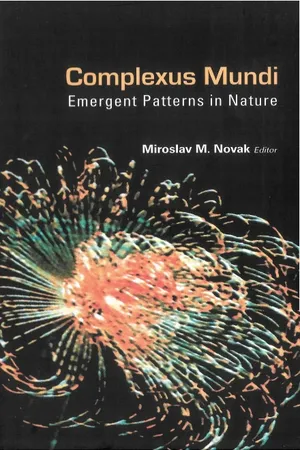
This is a test
- 360 pages
- English
- PDF
- Available on iOS & Android
eBook - PDF
Book details
Table of contents
Citations
Frequently asked questions
At the moment all of our mobile-responsive ePub books are available to download via the app. Most of our PDFs are also available to download and we're working on making the final remaining ones downloadable now. Learn more here.
Both plans give you full access to the library and all of Perlego’s features. The only differences are the price and subscription period: With the annual plan you’ll save around 30% compared to 12 months on the monthly plan.
We are an online textbook subscription service, where you can get access to an entire online library for less than the price of a single book per month. With over 1 million books across 1000+ topics, we’ve got you covered! Learn more here.
Look out for the read-aloud symbol on your next book to see if you can listen to it. The read-aloud tool reads text aloud for you, highlighting the text as it is being read. You can pause it, speed it up and slow it down. Learn more here.
Yes, you can access Complexus Mundi: Emergent Patterns In Nature by Miroslav M Novak in PDF and/or ePUB format, as well as other popular books in Sciences biologiques & Science générale. We have over one million books available in our catalogue for you to explore.
Information
Topic
Sciences biologiquesSubtopic
Science généraleTable of contents
- Contents
- Preface
- Structure of Genetic Regulatory Networks: Evidence for Scale Free Networks
- Modelling Fractal Dynamics
- Fractional Relaxation of Distributed Order
- Fractional Time: Dishomogenous Poisson Processes vs. Homogeneous Non-Poisson Processes
- Markov Memory in Multifractal Natural Processes
- Description of Complex Systems in Terms of Self-Organization Processes of Prime Integer Relations
- Dynamical Decomposition of Multifractal Time Series as Fractal Evolution and Long-Term Cycles: Applications to Foreign Currency Exchange Market
- Fractal Sets From Noninvertible Maps
- A Generative Construction and Visualization of 3D Fractal Measures
- Complexity in Nature and Society: Complexity Management in the Age of Globalization
- Fractals Complexity and Chaos in Supply Chain Networks
- The Effects of Different Competition Rules on the Power-Law Exponent of High Income Distributions
- Synergetics on its Way to the Life Sciences
- Complexity Fractals Nature and Industrial Design: Some Connections
- Modelling Pattern Formation Upon Laser-Induced Etching
- Fractal Properties of Some Machined Surfaces
- Fractals Morphological Spectrum and Complexity of Interfacial Patterns in Non-Equilibrium Solidification
- Competition of Doublon Structure in the Phase-Field Model
- Study of Thermal Field in Composite Materials
- Simulation of Geochemical Banding in Acidization-Precipitation Experiments In-Situ
- Bulk Mediated Surface Diffusion: Non Markovian and Biased Behavior
- Multifractal Formalism for Remote Sensing: A Contribution to the Description and the Understanding of Meteorological Phenomena in Satellite Images
- The Distance Ratio Fractal Image
- Iterated Function Systems in Mixed Euclidean and p-adic Spaces
- Multifractality of the Multiplicative Autoregressive Point Processes
- Analysis of Geographical Distribution Patterns in Plants Using Fractals
- Hierarchy of Cellular Automata in Relation to Control of Chaos or Anticontrol
- Fractal Analysis of the Images Using Wavelet Transformation
- Clustering Phenomena in the Time Distribution of Lightning
- A Cornucopia of Connections: Finding Four Familiar Fractals in the Tower of Hanoi
- Monitoring the Depth of Anaesthesia Using Fractal Complexity Method
- The Complex Couplings and Gompertzian Dynamics
- Author Index